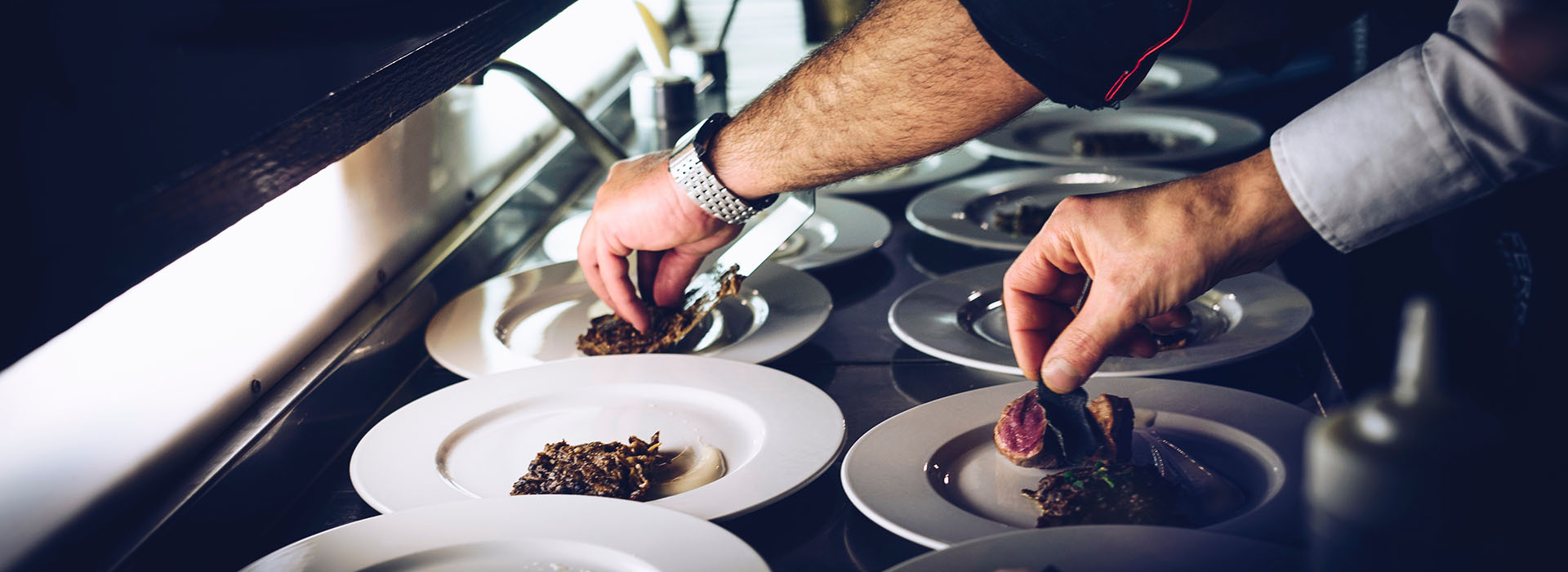
A 101 on getting the most juice out of the squeeze of retooling a menu using psychology, smart wordsmithing, and folding in a nod to trends
A restaurant menu is a restaurant’s best marketing tool. The menu is the voice of the restaurant. The menu is the promise the restaurant makes to every guest who sits down for a meal. If a restaurant delivers interesting, appealing, and honest food, the menu should say so. So why are so many menus a septic tank of virulent, rotted ideas? Conventional wisdom tells us that a product offering — be it in a restaurant, at a car dealership or clothing store — should be done with laser-like precision. Restaurants need their menu to work for their benefit, stimulating customer traffic and adding coin to top line sales.
Sell smarter. The product you offer has to be sold before anything else makes one bit of a difference. Consider adding a section for vegetables and sharable dishes and removing that generic “sides” section that gets little to no attention. Instead, get roasted carrots on the menu served family style, plopping $7 on the top line.
Size matters. A lot. The bible-length volume that gets plopped down in front of customers is a relic. Ever take the time to read your menu, from start to finish? Seriously. If there are 1,000 words, you are using too much ink. Nobody is reading it all; they have dialed into a choice long before they got to page 8. And if they haven’t, the pace of table turns has just come to a molasses flowing pace.
Get lean and shed the losers. Lop off the bottom 20-percent performers. Admit that not everything is a top seller. Just because aunt Suzie comes in once a month for the pot roast doesn’t make it a good seller. Nor does it make cheap aunt Suzie a good customer – but that’s another conversation. Commit to trimming the trim-worthy.
Add 1, drop 2. For every dish that earns a spot on your menu, remove two. This practice is the only way to ensure that the menu doesn’t keep growing and growing and growing. Big menu? Lots of inventory. Lots of inventory? Room for shrink. Generally, 80% of your sales come from the top 20-percent of your menu. Add 1 dish, drop 2 – You will be thankful you did.
Eat out and read other menus. Maybe even check out the internet. For all that is holy, work on your business not just in it! This means being aware of what is trending, what is a passing fad, what will benefit your menu and what needs to be distanced. While sticking to your restaurant mission —you do have a mission, don’t you?! — come up with criteria for what belongs on the menu. Just because you saw it on Chopped doesn’t mean it works for you. If you see some great approaches to fried chicken that work with your equipment, your customer flow, and price points, then make the move.
The next steps? Item placement, the psychology of choice, and strategic pricing come next. There are voluminous studies on the study of how we read and make choices. Any menu planner will tell you that your eye falls to the top right of the page first. Start with that.
As for choices, less is more. A leaner menu means less inventory, more practice in executing the dishes and mastery of the content. But more importantly it makes decision making more stressful for your guests. It’s always better to offer a concise set of choices – both for you and your customer.
Neighboring higher-priced item next to another item of which you actually prefer to get traction is a good move. The $34 barrel-cut filet mignon looks like a bargain next to the $58 porterhouse. The mind fake is that you want to move more of the $34 filets because they are costed at a better margin.
“A struggle between what we think and what we see.” Get some graphic design help. The right colors lend appeal, as does white space, font choice and layout. Hiring a professional that is equipped with your well thought-out content is key. What customers see in your menu is a direct result of how you present your products. There is no place for two-stepping into an amateur looking menu if you take to Google Docs and lay waste to your menu project.
Explain, please. The content of the dishes should be clear. Customers are tantalized by clarity in what to expect in the food they have ordered. Fanciful descriptors can be useful. Alas, there is a balance. Overly flowery descriptions are laughable at best and, worse, comes off as silly. The provenance of every ingredient isn’t necessary. Descriptions are much like compliments: sincere, intentional and restrained. It’s a menu, not a lexicon in the study of all things gastronomic.
What do you like about your menu? Start there. Invest the time and resources in constructing a menu that is a direct reflection of the mission of the restaurant. The menu sells your product. No gray area here. A shoddy menu yields shoddy results.
– Jim Berman
